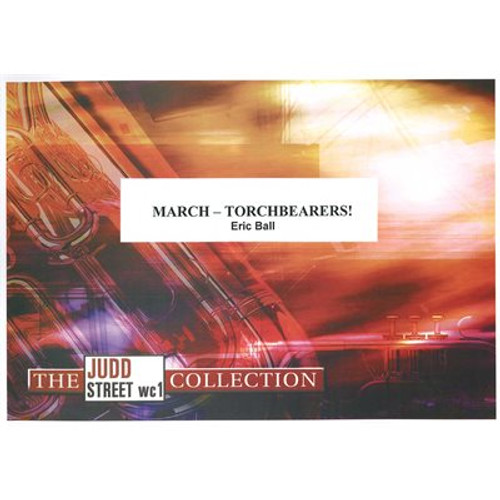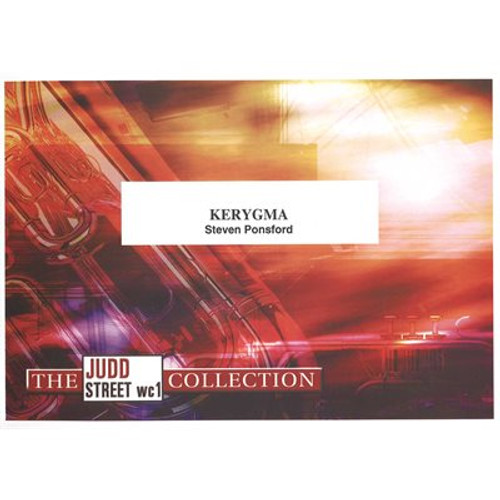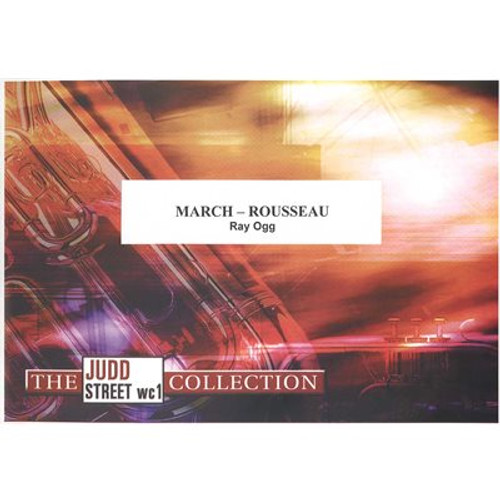Product Description
Comments by Brian Bowen
- Whither shall I go from thy spirit? or whither shall I flee from thy presence?
- If I ascend up into Heaven, thou art there: if I make my bed in Hell, behold, thou art there.
- If I take the wings of the morning, and dwell in the uttermost parts of the sea;
- Even there shall thy hand lead me, and thy right hand shall hold me.
- If I say, Surely the darkness shall cover me; even the night shall be light about me.
Herein lies the source of inspiration for this work. The composer has sought to capture the 'moods evoked by reading Psalm 139, especially verses 7-11'. Although only once used in its entirety the hymn, Still, still with thee, appears in derivative forms as a 'head-motive' as at the very commencement. There are three opposing movements subtitled The imprisoned spirit, The heart's grief and Tribulation. As if a continual reminder of the eternal presence, and important ethereal theme is interpolated and linked to the 'head-motive' (muted cornets and trombones or horns); the addition of a soprano voice as indicated on the score may well heighten its effectiveness. (It would be advisable for this part to be transposed and copied from the Soprano Cornet part).
A sensation of weightlessness would seem to pervade the opening material. To obtain an effortless performance in practical terms, the composer's suggested minim beat will help - this will assist the music to float and not become pedestrian. At the ethereal theme (the seventh bar of A), balance, blend and fine intonation are vital. If a soprano voice is added, a distant balance is preferred to one that is too forward.
The imprisoned spirit ᄀᆰ The third verse of Charles Wesley's hymn, And can it be, underlies the theme played by the Euphonium. Initially depicted in a state of repression, the spirit quickly becomes and overt expression of writhing torment (section B). Attention is drawn to the conflicting rhythms; upper cornets and tenor trombones in duple time against the rest of the band's triple time, also duplets against triplets abound. Do not allow these opposing groups to upset each other, for the effectiveness lies in the solidarity of the two. Ensure a positive entry by the Euphonium and Basses at the Allegro moderato in C. The slight relaxing of tension in bars 13 to 15 is brief, for another upsurge ensures at the lead-in to D. Again at E the 'head-motive' is reintroduced ᄀᆰ 'Still, still with thee' and in F the ethereal theme, before preparing the mood of the following movement. An innovation here and later was the writing for Glockenspiel. In this section its delicate ring evokes a remote, serene quality.
The heart's grief ᄀᆰ The composer has invented his own melody for Henry Milman's hymn, When our heads are bowed with woe. It is in the style of a solemn chorale closely matching the words. The mellow timbre of the trombone is desirable to enable the horns to blend when assisting the higher register. Sustained playing is required but do not neglect to shape the phrases in H. At section I we are again reminded of the presence, the comforting presence which upholds the stricken heart.
Tribulation ᄀᆰ In its conception this movement is more violently opposed to its neighbors; technically it will be found more demanding. A rhythmic, and at times vehement, impact is made representing the testing helter-skelter and whirl of life or, as the composer said, 'the wheel of life'. To obtain a convincing welter of sound, and at times suppressed clamor, very firm control is necessary. There is a sinister element in such ordered hubbub which the interpreter may well exploit.
From the ninth bar of M, very forceful, muted rhythms are set up which, if they are to become sufficiently venomous, will require uninhibited playing. The 'head-motive' is worked into the scheme at O; through the turmoil the spirit acknowledges its awareness of the eternal presence ᄀᆰ the calming influence. The tribulation rapidly dispels and the spirit is fleeting toward a haven suggested by the verse:
Though outwardly the transition from O to P must be natural and free, it will, in practice, require careful measuring of the varying tempi. Perhaps more closely fitting the exalted setting of the Sankey melody at P is the last verse of Harriet Beecher Stoew's poem:
- When sinks the soul, subdued by toil and slumber,
- Its closing eye looks up to thee in prayer;
- Sweet the repose beneath thy wings o'ershading,
- But sweeter still, to wake and find thee there.
- So shall it be at last, in that bright morning,
- When the soul waketh, and life's shadows flee;
- Oh, in that hour, fairer than daylight dawning,
- Shall rise the glorious thought, I am with thee!
The spirit has become transported from the mundane to the sublime ᄀᆰ from the terrestrial to the celestial; it soars beyond earthly limits in blest communion. A build-up of volume and tempo reaches a climax of exalted proportion (section R) which quickly diminishes, returning to the 'head-motive'. Skilled breath control is demanded in the sustained chords leading up to the conclusion. The level of sound dies and movement ceases yet seemingly continues to float out on an inaudible plain: '..I am with thee.'
(sample music)
(view series guide)
Produced by The Salvation Army, SP&S, UK













